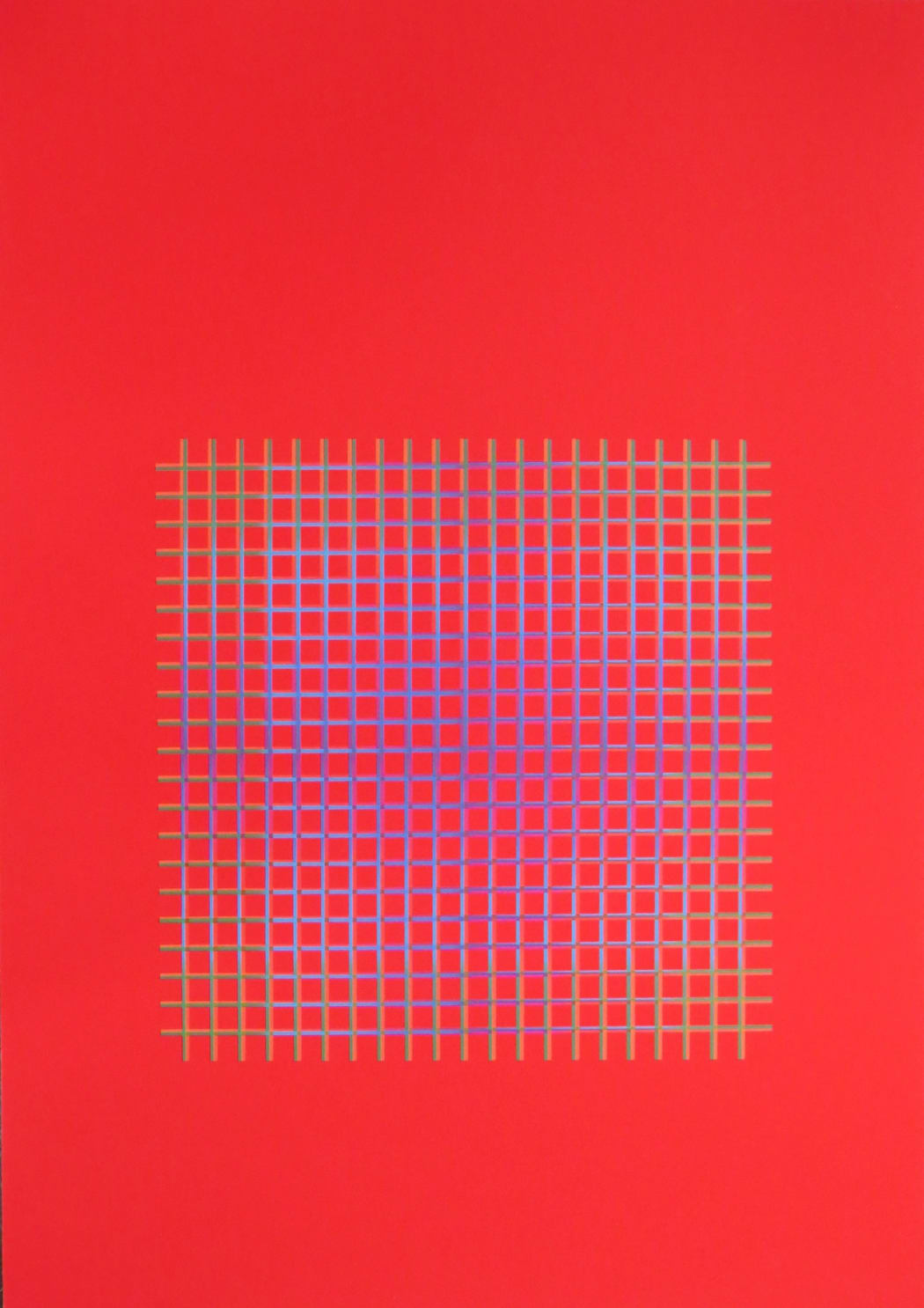|
Screen printing was popularised as an artistic medium in the early 1960s by Andy Warhol who used the medium to capture the American post-war zeitgeist through now iconic works such as the 1962 Marilyn Diptych.
Although screen printing was taken up by prominent pop artists across the Atlantic such as Eduardo Paolozzi and Joe Tilson, in the same context the medium became associated with Op Art principally due to the popularity of artists including Bridget Riley and Victor Vasarely.
Around the same time, Julia Atkinson became the first student at The Slade School of Fine Art to specialise in screen printing, and she won an award for her success with the medium.
Over the following decade, Atkinson's practice centred on the Interchange Series in which the artist's mastery of screen printing reaches its apex. By methodically experimenting with colour combinations within grid formats, and informed by a rigorous study of contemporary colour theory, Atkinson produced tantalising optical illusions that appear to shimmer and pulsate.
Even today, 50 years after they were produced, the screenprints retain their full vibrancy and emanate a futuristic energy, while recalling the techno-utopianism that defined the cultural landscape in the late 20th century.
|

